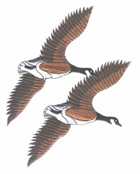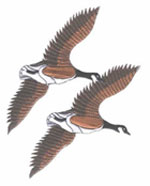Grey's Scouts were a Rhodesian mounted infantry unit raised in July 1975 and named after George Grey, a prominent soldier in the Second Matabele War. Based in Salisbury (now Harare), they were known for their participation in the Rhodesian Bush War. The unit was disbanded in 11th November 1979 (following the conclusion of the Bush War in 1979) and then became a regiment of the Special Forces of Zimbabwe in June 1980. It was totally disbanded in July 1986 because of lack of resources.
Use in the Rhodesian Bush War
The creation of the unit was probably inspired by the Dragoons of Angola, a Portuguese Army mounted unit, raised in 1966, during the Portuguese Colonial War, to combat the guerrillas in Eastern Angola. Like the Dragoons of Angola, Grey's Scouts were used for tracking, reconnaissance, pursuit, and, most prominently, patrol in the Rhodesian Bush War. With measured variations in horse speed for training purposes, they would cover an area of over 65 km (40 miles) on the average day. Their routes often took them through active minefields, which they were to inspect. In addition to this, the small stature and manoeuvrability of the crossbreeds they rode on was of repeated benefit to the Rhodesian forces in the construction of border defences; the Scouts could transport materials and supplies over terrains impassable to vehicles. The horses themselves were mostly given in charity by sympathisers of the Rhodesian effort from South Africa and elsewhere.
Constitution and training
Initially, the unit consisted of around 200 men, but this would eventually grow to over 1,000. It conscripted soldiers from other infantry regiments of the Rhodesian Army, who were then instructed in equestrianism. Craftsmen such as farriers, horsebreeders, smithers and manufacturers were employed internally. Grey's Scouts were trained as mounted infantry rather than cavalry, and were prepared for engagements on foot rather than on horseback. A tactic of rushing and fronting with their horses was implemented to significant success by Grey's Scouts and they were noted for their skill in launching shock attacks. The number of casualties Grey's Scouts suffered during the Rhodesian Bush War is known, and is recorded to be nine.
Source
Major Alexander Fraser Kirk and Sgt. Major Roy Watson were part of the original HQ Group who started the Grey's Scouts with farmers as the first experimental riders. Major Anthony Stephens became the first commanding officer of both the Regular and Territorial units of the Grey's Scouts. Born in 1932, Stephens had been a National Service officer in the Irish Guards, and as a civilian in Singapore, had married the daughter of the second in command of the Rhodesian African Rifles in Malaya.He can be credited for shaping the Scouts and he provided good leadership to the unit. Due to illness, he retired in 1977, being replaced by Lieutenant-Colonel Michael MacKenna from 1RAR regiment. Second in command of the Scouts was Captain Mike Wilson and Sergeant Roy Elderkin in charge of training. He provided good support for Major Stephens during the early years of the Scouts, and was a former riding instructor or rough rider with the King's Troop. He had retired and was the manager of the horse riding school near Inkomo Barracks outside of Salisbury. Whilst the group was mainly composed of both black and white Rhodesians, a number of foreign people had joined the ranks, as well as many women from the Rhodesian Women's Service, the members of which were responsible for chores such as working the horses, as well as taking care of the several dogs which had been later enlisted and carrying out veterinary duties.The Grey's Scouts also became involved in the training of tracker dogs for the Unit.
The Grey's Scouts Regiment was divided into three Squadrons, A,B and C the first being compiled of regular soldiers and conscripted National Servicemen and the latter being of Territorial Servicemen and regular commanders.Both squadrons covered the same areas of operation to much the same success.We also have to commend the women in the unit who took on the roll of Veterinary assistants and nurses and the vets themselves who through difficult conditions kept the unit on the move and the horses in operational condition.
The regiment owed a great debt of gratitude to a man who not only kept the unit on their toes but also kept everything in perfect step and looking like soldiers. Sgt Maj Don Kenny, whom without as he always said we would end up looking like a shower of sh..... too true, but we all survived him on the parade ground to live another day.We know he is now retired in Yorkshire, hope the land treats you well.
Although the command for the unit was located at Nkomo barracks outside of Salisbury the main thrust of the war effort was executed from the Azambezi River Lodge Hotel at Victoria Falls which had been comondered by the army at the time and had become the operations centre to deploy the squadrons to their respective operational areas around the country. Each unit of men deployed, known as a stick comprised of six to eight men who carried as much armament as they could to survive the six to eight days out on patrol.Each patrol had at least one man who carried a machine gun commonly known as an MAG, and one lucky person had to carry the B52 radio on his back each day , a dead weight which was passed around so as everyone got their turn to carry it.Common to all soldiers were at least 3 to 4 grenades, two claymore's and as much ammo as the webbing could carry.If you wanted to take extra food or water it had to share a place in the saddlebags with the high protein horse pellets.Patrols started when you dragged your sorry body out of the sleeping bag in the morning and went on until dusk, at which time it was a good idea to look for a place to bed down for the night. Men always slept around the horses to protect them from wild animals, mainly Lions who were more dangerous to them than the gooks.Daily patrols consisted of looking out for spoor and if found and was fresh enough to track the insurgents until contact was made and destroy or capture for interigation.Have you ever tried to run from a horse, quite difficult in 26 to 29 degree temperatures.The horses were watered as often as possible during the day and two rest periods were made to give the horses a rest and time for their backs to dry from the sweat because of the saddle and blankets.Men took this time out to eat and drink and rest before it was time to saddle up and hey ho.Lucky for most the insurgents during a contact were so intimidated by the horses bearing down on them they fired at you on the run pointing their weapons over their shoulders and fired over your heads into space.Infact this was the norm for them because of their lack of proper military training.Well done Robert good job ol chap.
The Rhodesian Grey's Scouts were demobilised on 11th November 1979, and those that chose to stay on under the new dispensation served until they were finally disbanded in 1986.
And so ends a chapter in the history books of a mounted Unit that rode out of the twilight and into the sunset never to return.
Articles and web sites of interest



